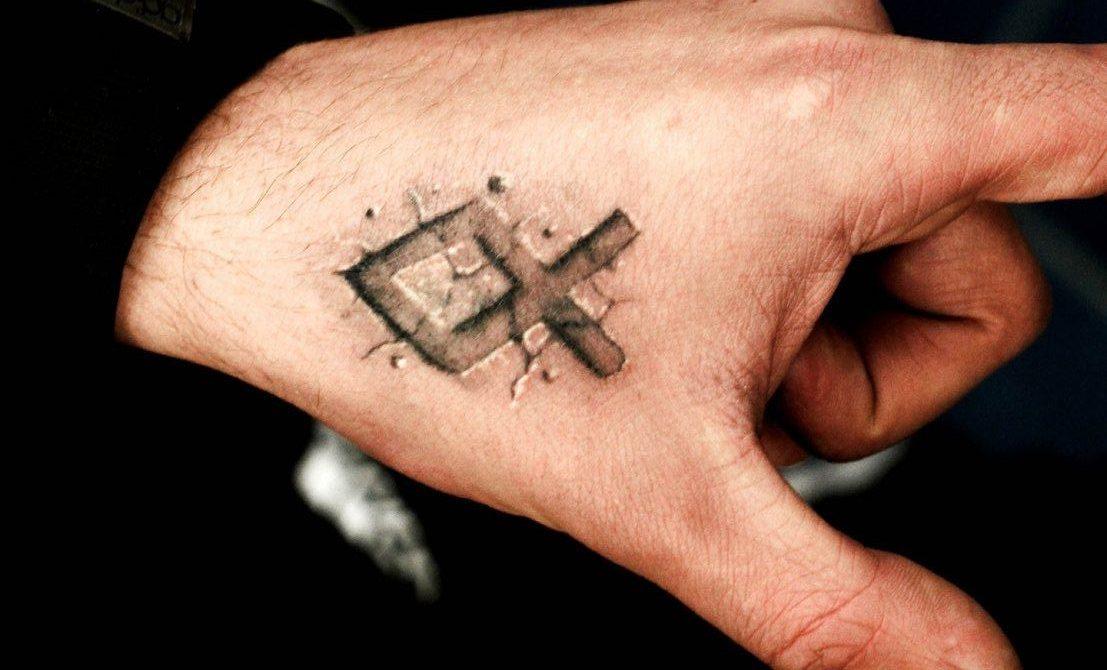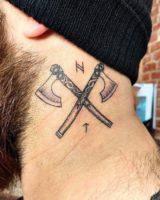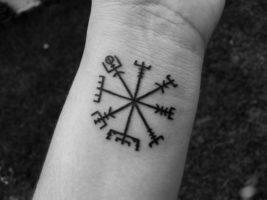
Slavic runes tattoo
Contents:
- Ornamental elements of Slavic tattoos
- The main features of the Slavic tattoos of the ancient Old Believers
- The meaning of a tattoo with Slavic runes
- The reasons for the decline and loss of Slavic tattoos
- Swastika tattoo
- Tattoos of Slavic Gods
- Photo of Slavic runes tattoo on head
- Photo of tattoo slavic runes on the body
- Photo of Slavic runes tattoo on hand
- Photo of Slavic runes tattoo on the leg
Pagan tattoos have unique beauty and appeal.
Most people apply such pictures as a talisman with an appeal to the forces of nature to protect and preserve their wearer. They can depict ancient pagan gods, a variety of ornaments that were used by the Old Believers.
Tattoos with pagan designs can be done both in monochrome and in color.
Pagan tattoos include solstice, animals, trixel, squares, circles, rectangles, ribbons, runes, and various mixed ornaments.
Runic tattoos include rune symbols, 3, 4 angular swastikas, 4 and 5 pointed stars and a complex geometric ornament.
Pagan tattoos of the ancient Slavs have been used since the late Middle Ages (in the old days, goods were marked with runic signs). The signs of the runes were used as trade marks (at that time they were called "tamgas").
Ornamental elements of Slavic tattoos
Among the ancient Slavs, one of the most common was considered a symbol that meant prosperity and fertility. In the XI century, Slavic tattoos received some variety in the form of notes of Catholic symbolism.
Women applied tattoos with images of crosses, foliage and floral designs, as well as chain weaves of various objects (flowers, leaves, branches, greenery).
For men, tattoos were depicted primarily to show strength and power.
Such plots include the image of a crown, a heart, inside which is the inscription of a person who respected the noble origin of the tattoo bearer.
The main features of the Slavic tattoos of the ancient Old Believers
The characteristic features that describe Slavic tattoos include the following:
- the image of Gzhel painted signs;
- the image of the Palekh painted signs;
- images from epics and songs;
- patterns containing sketches of the book art of Christians;
- canvases by Russian artists.
The meaning of a tattoo with Slavic runes
Slavic runes are an ancient manifestation of the Slavic writing of schismatics. The rune signs are similar to Asian hieroglyphs with deep historical meaning.
To understand the runes, an interpretation of each of the runes is required. Slavic symbols and ornaments are a gradually developing trend that has great advantages for development in the future.
Each rune symbol has a mysterious image. The meanings of the symbols contain the words: peace, rainbow, power, wind, fate, support, Perun, source, etc. Old Believer runic writing appeared long before the 10th century, which was marked by the adoption of a new faith. This fact is evidenced by archaeological excavations with written letters on household appliances.
The rune of peace represents the inner state of a person and his desire for tranquility, peace and order. The rainbow rune personifies the road to the center of the universe. The runic symbol of strength was applied by the Slavic warriors, the sign of the wind contributed to the achievement of the goal, a steady ascent to the top. The symbol of Perun is the rune of the Thunderer, who keeps and protects the world of people from chaos.
A tattoo depicting a tree with leaves in Slavic culture denotes a symbol of life. The images of various wild animals symbolized their strength. Such tattoos were depicted with an appeal to acquire the qualities and spirit of the depicted animals. The image of water, fire and the sun was symbolized as protection and amulet by the forces of nature.
The reasons for the decline and loss of Slavic tattoos
The adoption of a new faith in the 10th century practically destroyed Slavic tattoos. Religion began to eradicate all ritual cult events of pagan tribes. Church ministers forbade tattooing as a pagan rite. Churches and priests tried to protect the population of their tribe from false prophets who call themselves prophets and all-seeing, and also to rid their parishioners of the mythical power of spirits.
Swastika tattoo
One of the most common tattoos on Old Slavic themes are Slavic swastikas of various angles and shapes. This ornament is often confused with the swastika of Nazi Germany, which was also borrowed from the ancient peoples, so there is no need to compare such things.
A tattoo of Slavic themes is depicted in the form of a cult sign of a cross with ends bent clockwise, denoting changes that obey the laws of nature, changes in the environment - the alternation of night and day, seasons.
The Old Believers interpreted the world around them as an incessant cycle in which life gradually goes to death, and then reborn again into a new life. The Slavic cult swastika is usually depicted in view of at least three clockwise bends (there may be more bends).
The swastika symbolized the correct order of things in nature, namely health and strength, sun, light and joy.
Also, Slavic Old Believers applied tattoos as amulets. The most powerful amulets on the body were considered images of Ladinets, stars, Thunder wheel and Kolyadnik.
Tattoos of Slavic Gods
Slavic tattoos include images of Slavic Gods. Since before the adoption of Christianity, the Slavic Old Believers believed in a wide divine pantheon. The image of Perun testified as a patron. The Slavs have preserved epics that Perun, during the pursuit of the dragon, pierced him with lightning (in other sources, a spear is found).
To depict incredible strength, warriors tattooed dragons, lions and tigers. Veles guarded forests, revealed the secrets of medicine and tillage. Slavic schismatics considered Svarog to be the God of heavenly forces and the father of all that was created. Yarilo symbolized the God of the sun and fertility. The Ladinets sign on the body symbolized happiness, love and harmony.
































cella
James Bond 2021 watch online